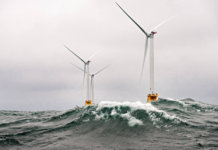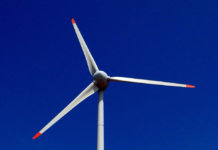 Despite what many anti-wind groups may claim, wind farms in the U.S. have no impact on nearby residential property values, according to a new report from the Lawrence Berkeley National Laboratory (LBNL).
Despite what many anti-wind groups may claim, wind farms in the U.S. have no impact on nearby residential property values, according to a new report from the Lawrence Berkeley National Laboratory (LBNL).
‘This is the second of two major studies we have conducted on this topic, and in both studies [using two different datasets], we find no statistical evidence that operating wind turbines have had any measurable impact on home sales prices,’ says Ben Hoen, an LBNL researcher and lead author of the report.
For the new study, LBNL analyzed more than 50,000 home sales near 67 wind facilities in 27 counties across nine U.S. states. The lab notes that it used a number of sophisticated techniques to control for other potential impacts on home prices, including collecting data that spanned well before the wind facilities' development was announced to after they were constructed and operating. This allowed the researchers to control for any pre-existing differences in home sales prices across their sample and any changes that occurred due to the housing bubble.
This study, which the lab says is the most comprehensive to date, builds on both a previous LBNL study as well a number of other academic and published U.S. studies, which also generally find no measurable impacts near operating turbines.
"Although there have been claims of significant property value impacts near operating wind turbines that regularly surface in the press or in local communities, strong evidence to support those claims has failed to materialize in all of the major U.S. studies conducted thus far," says Hoen.
"Moreover, our findings comport with the large set of studies that have investigated other potentially similar disamenities, such as high-voltage transmission lines, landfills and noisy roads, which suggest that widespread impacts from wind turbines would be either relatively small or non-existent."
The research was supported by the U.S. Department of Energy's Office of Energy Efficiency and Renewable Energy. The full report is available HERE.



